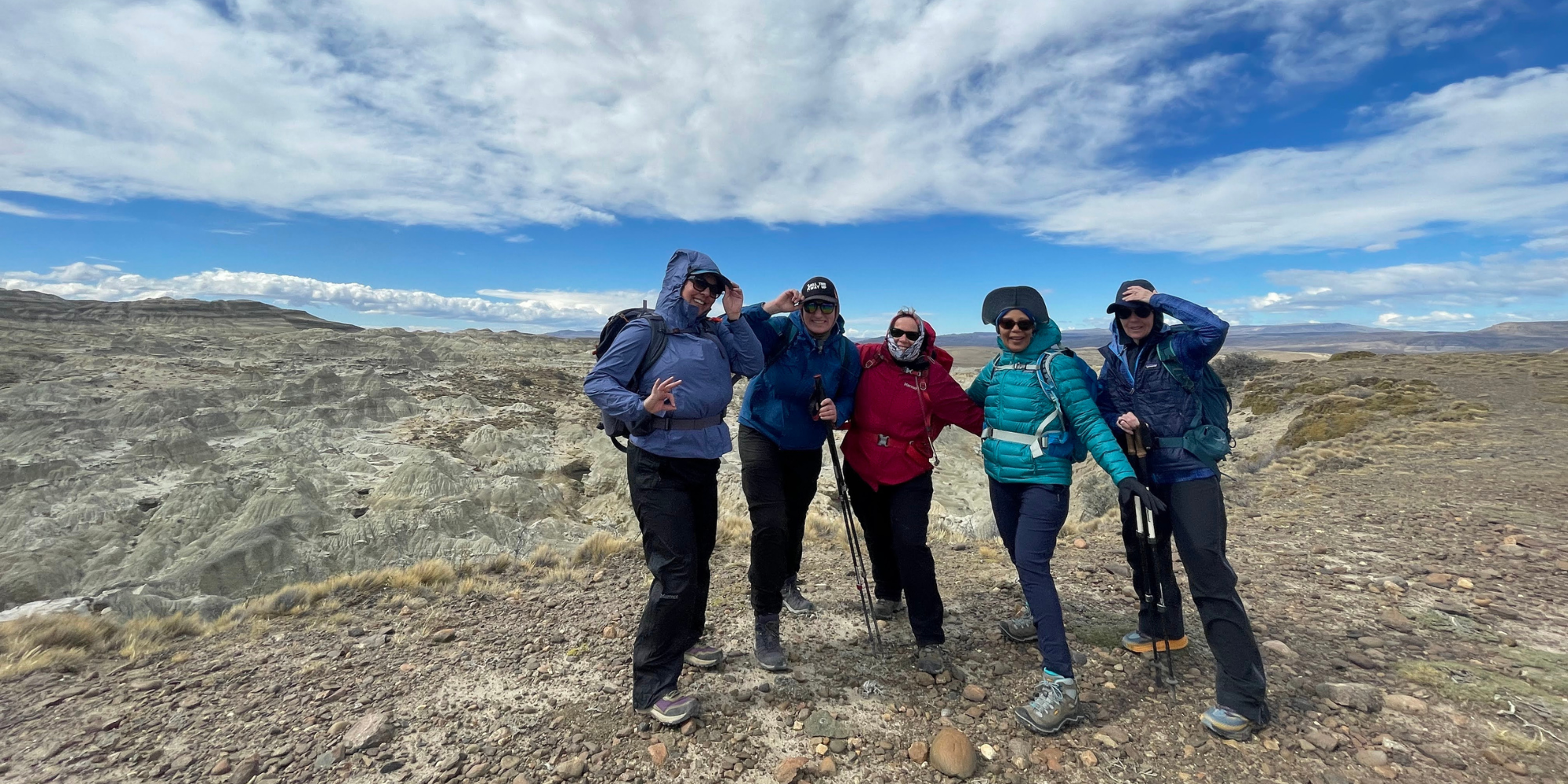As the weather starts to cool and the days grow shorter, it’s essential to pack and wear the right hiking clothes. The shift in temperatures calls for a strategic approach to layering. Choosing the proper layers can enhance your comfort, manage moisture, and maintain your core temperature throughout outdoor adventures.
Your goal when recreating outdoors is to stay warm while sweating as little as possible. Several lighter layers provide more insulation and are much more adjustable than one heavy layer. Make sure to bring a daypack on your adventures, so you have a place to put your extra layers as you warm up or take a break.

Here is an essential layering system:
-
Start with a base layer of silk or "lightweight" synthetic long sleeve, underwear and/or liner socks. These materials draw moisture away from the skin (called "wicking") and help keep you dry and, therefore, warmer.
-
Over the base layer, wear a second, medium-weight layer on your upper body, such as "expedition-weight" Capilene or Polartec, and wool pants or a synthetic equivalent, such as Polartec or Capilene fleece.
-
Over the second layer, add a third heavy-weight layer. This layer should be made of thick material such as wool or fleece. Typically, this layer will not be necessary, even in cold weather, as long as you’re active. As soon as you stop for a break, put this on. If you're overheated, you might think you want to cool down. You don't, at least not abruptly. By the time you think you’re just right, your body temperature is on a downward trajectory that will overshoot. If it’s raining or windy, you will also want to add the outer layer described below.
-
This fourth and final layer is called the outer layer. It protects from wind and rain. Even when it is not raining or windy, we lose heat from convection, the movement of air against our body. This final outer layer eliminates that and keeps you substantially warmer.
The outer layer should be a parka or jacket made of coated nylon or a waterproof/breathable fabric like Gore-tex, HellyTech, Membrane, H2No, or Ultrex. This layer's goal is to keep water out—you never want your other layers to get wet.
Before purchasing your outer layer, be sure that it fits you correctly. It should be large enough to fit over all your layers without constricting movement. In particular, the hood needs to be effective. It should shield your face from the rain and turn with your head. Movement of your arms should not interfere with the hood. Once you put on a daypack, ensure you can still raise your arms.
Also, wind pants should be added as an extra outer layer of protection. Wind pants should be comfortable, allow enough room for your layers, and permit free movement of your legs (for example, can you crouch comfortably?). Partial or full-length leg zippers are helpful for quickly putting your pants on over your boots. Full-length leg zipper pants are great for easily taking off and turning into shorts when the weather warms up.
When hiking or recreating outside, you should be on the chilly side. If you're already warm, you will quickly overheat. Before you overheat, you should pause and remove a layer to prevent yourself from sweating. On a cold day, starting with a lightweight and midweight layer with an outer layer over it is common, and then pulling off the midweight as you warm up.



